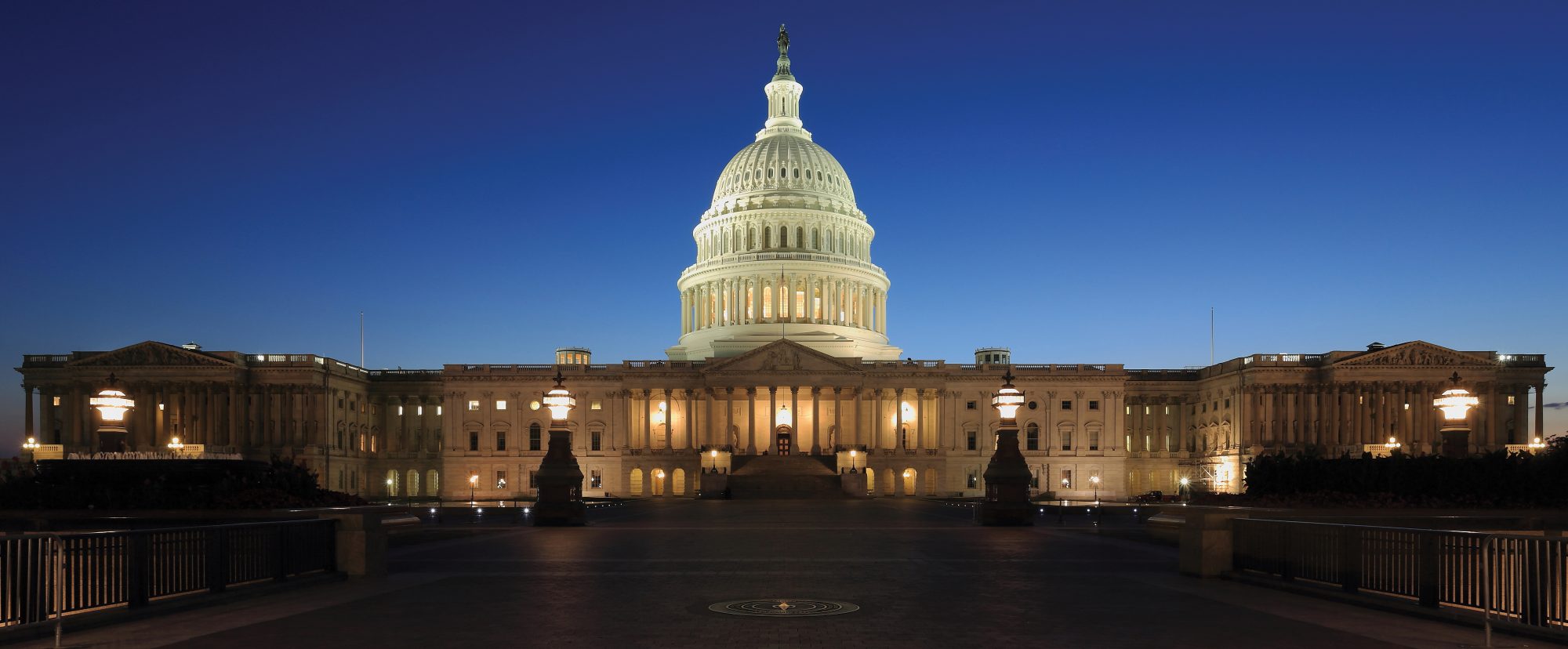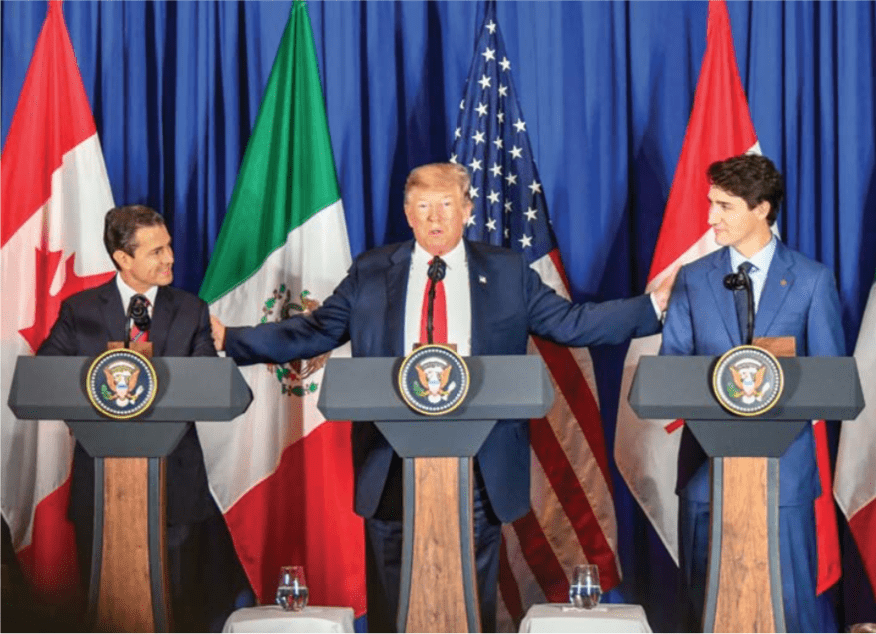How Will the 116th Congress Drive the Conversation?

The results of the 2018 United States midterm elections altered the power dynamic in Washington by handing control of the House of Representatives to the Democratic Party. The combination of the legislative and investigative implications of that change will impact the Trump presidency.
Sarah Goldfeder
At the heart of any democracy is a challenge: how to honour the preferences of the majority while protecting the rights of the minority. From the first Continental Congress in Philadelphia in 1774, addressing that challenge has been central to governing what we now call the United States of America.
Concerns of the rural southern colonies (the minority) were addressed within the Constitution. The “grand bargain” that produced two equal but different houses was loosely based on the Westminster system, but with one house reflecting the will of the people and the other, the requirements of the colonies—essentially protecting regional concerns of a minority by providing them with equal weight of the majority.
In today’s world, the political split remains mostly the same: the rural voters prefer a conservative take on government and the urban, a more progressive. The results of the United States’ 2018 midterm election reflected this division, with the Democrats winning the House of Representatives and the Republicans achieving modest (but significant) gains in the Senate. In addition, many of the races for seats in both houses were won on razor-thin margins.
For the Democrats who won seats in the 116th Congress, they have a choice between being collaborative or being confrontational. The motivations behind the individual choices have a lot to do with their constituencies and how they each was elected. Many of the newly elected are coming from red-to-blue districts, but the ones making headlines are the four young women that won from the left. While they are representing “safe” districts, and feel that they are in Washington with a mandate to enforce change, many of their colleagues came from those swing districts and are more politically moderate and cautious in their approach.
There is a path towards bipartisan cooperation on specific issues that would give both the Democrats and President Donald Trump something to brag about. Fixing health care, providing a path to citizen for the Dreamers, an infrastructure plan, and a federal minimum wage, for starters. Finding common ground with Trump may turn out to be much easier than it appears.
How this political reality plays out in the next two years leading into the 2020 Presidential election is hard to tell. When President Obama faced a split legislature in 2010, the ensuing legislative gridlock resulted in the use of executive action to force movement on key issues. In his first two years, President Trump has already made substantial use of executive orders to push his agenda forward. With a House of Representatives that could prove to be even less willing to work him in the next two, we should expect more of the same.
A Democratic or blue House means a Democrat in the Speaker’s Chair, and all the House committee chairs.
Nancy Pelosi has been there before. In 2008, she was the Speaker of the House. The Bush administration had negotiated a free trade agreement with Colombia under the Trade Promotion Authority Act of 2002. The Democrats were unhappy with the labour provisions of the agreement. Speaker Pelosi introduced an internal rule change that removed the TPA timeline for congressional approval of the trade deal. As a result, the Colombia agreement languished until the Republicans took back the house, finally passing it in 2012 on Speaker John Boehner’s watch.
While different, the concerns the Democrats have expressed on the current U.S.-Mexico-Canada agreement are similar to their reservations with the Colombian agreement. The critical Democratic constituency of the labour unions has never been a fan of trade agreements in general or NAFTA in particular. For Democrats, this deal will represent a challenge to balance the urban centres that rely on that labour vote (and are represented in Congress by lawmakers that are the furthest left) with the suburban/rural districts where Democrats won by tight margins and the constituencies believe in the agreement.
Many will argue that Americans don’t vote on trade, but rather on kitchen-table politics: health care, racial equality, education, economic disparities, the ability to get and keep a well-paying job. However, certain constituencies have made trade a wedge issue: labor and small business on the one hand, and farms and large corporate interests on the other.
The importance of wedge issues in elections lies in the way that they are introduced into the conversation. Wedge issues are typically complex issues distilled into narrow, binary decision points. On trade, the labour unions have succeeded in providing an argument as to why opening the borders to trade has taken away opportunities and depressed wages for American workers, in effect, making trade a kitchen-table issue.
How do the Democrats then respond to the legislative requirements for ratifying the USMCA? That will depend on how the White House moves forward. Initially, United States Trade Representative Robert Lighthizer reached out to the Democratic leadership to discuss the agreement. Those discussions, while labeled as “constructive,” have also brought to light specific issues that the Democrats will want to see addressed. If and how those are managed will be one part of the strategy to move the agreement forward.
The other variable in these calculations is the president himself. How he chooses to negotiate with the new leadership in the House will determine the fate of the agreement. If he chooses, before the 116th Congress is even seated, to overturn the apple cart and issue a notice of withdrawal from the North American Free Trade Agreement, that will be seen as bad faith by lawmakers from both sides of the aisle. They will argue that while he has the authority to initiate that process, he does not have the authority to complete the process. Regardless, the conversation on what it will take to pass the new agreement will come to a dead stop.
Make no mistake, for the next two years, the United States will be in full campaign mode. The jockeying for position within the Democrats has begun, with potential candidates reaching out to party leadership and influencers for support. Nancy Pelosi, while not under consideration for the nomination for president, is still an important player and how she runs her caucus will be a key factor in the 2020 election.

If the maneuverings of the White House at the end of 2018 are any indication, the Trump administration has yet to determine a campaign strategy for 2020. Questions surrounding who will be the next White House chief of staff, not to mention whether Mike Pence should remain on the ticket, indicated a level of chaos at the centre of the organization. Meanwhile, the personal twitter account of the president never lies dormant and continues to poke and prod allies and enemies alike.
The work of governing the United States has become markedly more difficult.
Tariffs, a trade war with China, and a bear market could all contribute to a trajectory towards recession. If the economy weakens enough to affect how much disposable income Americans have, President Trump might have to answer for economic policies that most economists see as problematic. Combine that with reduced productivity and wage stagnation and Democrats may have a chance of dusting off the James Carville’s line from the 1992 Clinton campaign, “It’s the economy, stupid.”
Americans want to vote for something or someone, and they vote for the future in every non-incumbent election—which is why Reagan’s “Morning in America” and Obama’s message of “Hope and Change,” resonated with voters. The question for the Democrats in the next two years is whether they can find a candidate that articulates a vision of the future the voters can ultimately endorse.
Sarah Goldfeder, a principal of Earnscliffe Strategy Group, is a former State Department official who advised two U.S. ambassadors to Ottawa, and previously served at the U.S. Embassy in Mexico.
